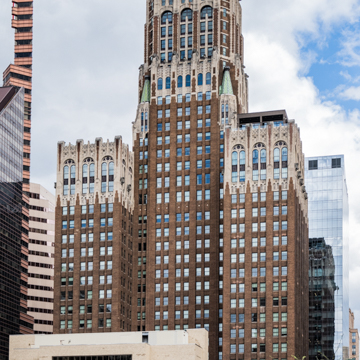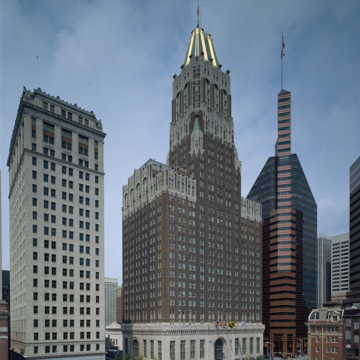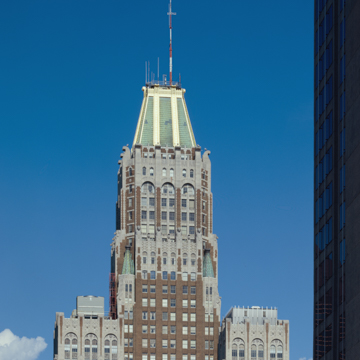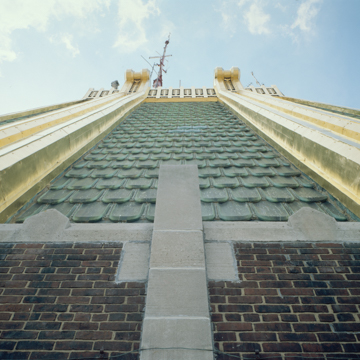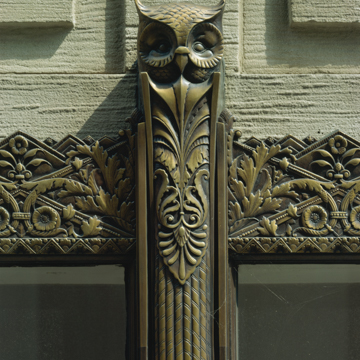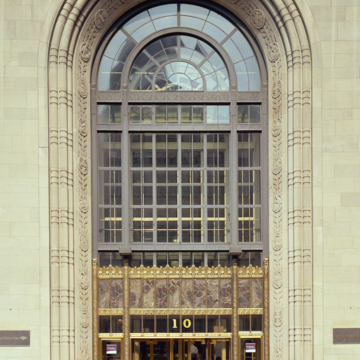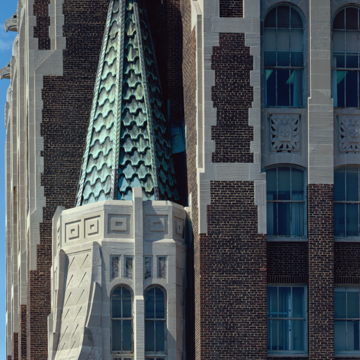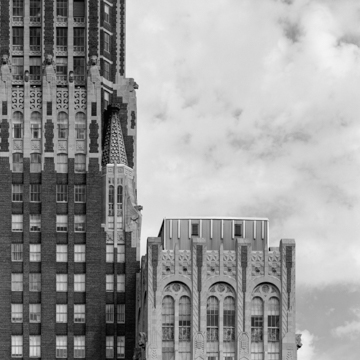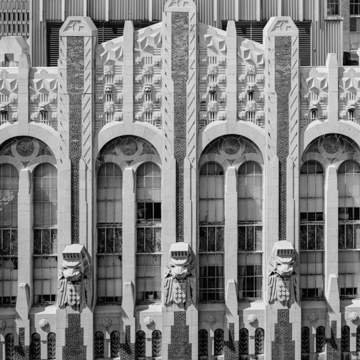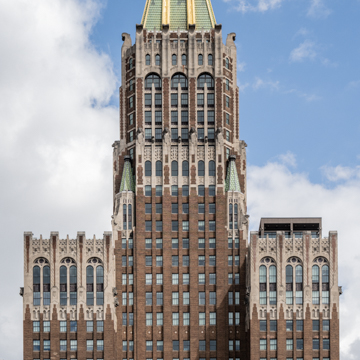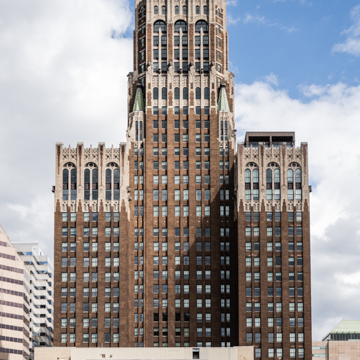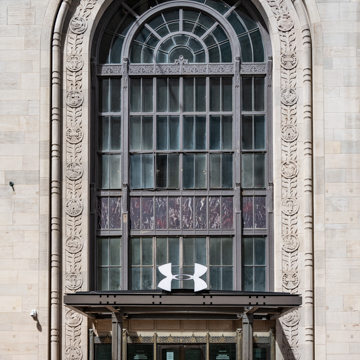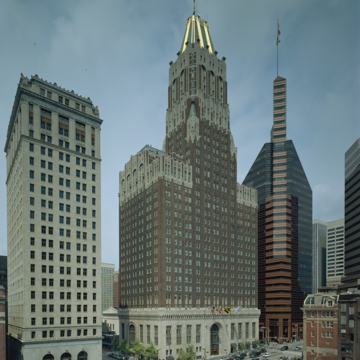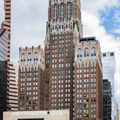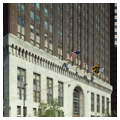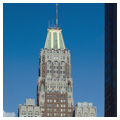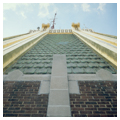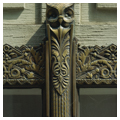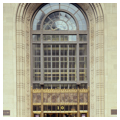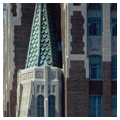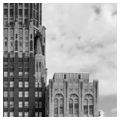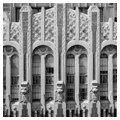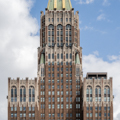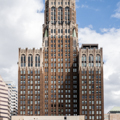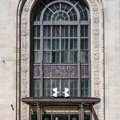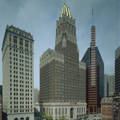When completed, at thirty-four stories (509 feet), this was the tallest office building in the country south of New York City, and it is still one of the most prominent and engaging features of the Baltimore skyline. A collaboration of architects and engineers, it is the city’s only setback skyscraper and an excellent example of Art Deco. The building was erected of local brick on a framework of structural steel with an elaborate first-story facade, cornice, and exuberant stylized Art Deco details in Indiana limestone. The latter encompass a playful mix of sunburst, zigzag, and other geometric patterns interspersed with representations of indigenous wildlife such as the eagle, owl, and crab, designed by Austrian-born Louis Fentner of New York. In the banking hall, murals by Griffith Baily Coale and McGill Mackall depict important events in Maryland and Baltimore history. They are among other artistic representations of the city’s progress and industry, embracing themes such as medicine, textiles, shipping, manufacturing, and the railroads.
References
Bach, Ira J. Chicago’s Famous Buildings. 3rd ed. Chicago: University of Chicago Press, 1980.
Baltimore Trust Building, Baltimore, Maryland, HABS No. MD-1119. Historic American Buildings Survey, National Park Service, Department of the Interior, 2001.
Dilts, James D., and John Dorsey. A Guide to Baltimore Architecture. 3rd ed. Centreville, MD: Tidewater Publishers, 1997.
Goldberger, Paul. The Skyscraper. New York: Alfred A. Knopf, 1982.
Lemire, Elsie, and Benjamin Flowers. Skyscraper: The Politics and Power of Building New York City in the Twentieth Century. Philadelphia: University of Pennsylvania Press, 2009.
Striner, Richard, and Melissa Blair. Washington and Baltimore Art Deco: A Design History of Neighboring Cities. Baltimore: John Hopkins University Press, 2014.















